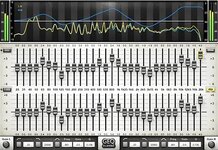If you have a singing style that flows around the song's tempo - by singing a bit before or after the beat, that's great, but the beat in this case is the guitar and it's timing is all over the place. It just blasts away, and when a tricky bit comes up it slows down, then speeds up when the tricky bit has gone. It also does something very odd when it plays those little finger style sections - it seems to lose the tempo altogether? A certain number of notes to play, so timing ceases till they've all been completed. If you try to tap your feet to it, suddenly you can't, then you can once it goes back to the main pattern. There are also a few bum notes that should have meant take two, or an edit. With the timing, editing would have been tricky. The player using a metronome click into their ears would have helped lock it all together. Oddly - the voice is very good - but what you missed is what a producer would do. Listen, and fix the little things. Like "great - but you cut that last note really short" or "The third word is very important and it must come on the beat" - that's what they do. They listen critically and they notice the little note that was flat and either re-record and edit, or nowadays just fix that quietly without making a big thing.
The important thing is your voice has character and is not bland. So many (mine included) are!
My suggestion to up the song is re-record the guitar with good timing, and if it can't be done in one go, cheat - and record a really good verse and then try another - then edit the whole song from the bits if the player is getting tired. But fix the twiddly bits and miss fretted notes. everyone plays guitar, so everyone notices. Voice stuff can be 'art' and take liberties, but the guitar has to be solid in it's timing.

